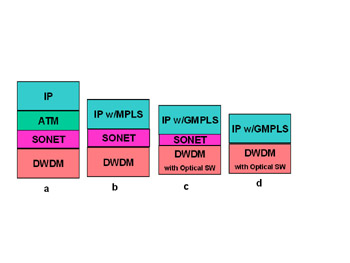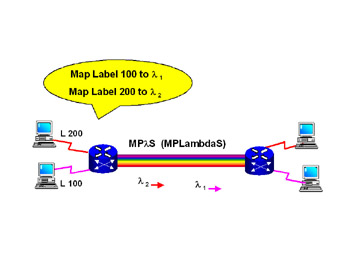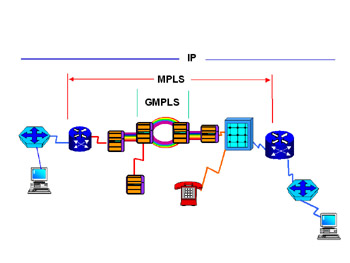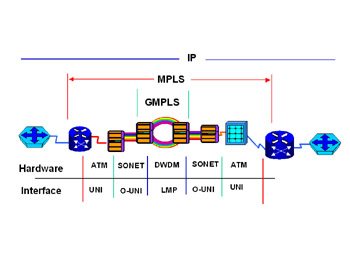Where Networking Is Going
|
| < Day Day Up > |
|
In Figure 6.4, we see the promise of GMPLS. Figure 6.4a represents our current position in the datacom-to-optical network interface. Data from routers goes to ATM switches. The ATM switches connect to SONET switches, and the SONET switches connect to DWDM networks. As the network migrates, we will find that layers of this stack begin to disappear-first with the elimination of ATM via MPLS, then to SONET for Thin SONET with GMPLS, and finally to packet over DWDM with switching (d in Figure 6.4).

Figure 6.4: The Promise of GMPLS
The Birth of GMPLS
MPLS researchers proved that a label could map to a color in a spectrum and that MPLS packets could be linked directly to an optical network. They called this process MPlS or MPLambdaS (see Figure 6.5). As research continued, it was found that, in order to have a truly dynamic network, we required a method for complete control of a network within the optical core. Thus, the concept of intelligent optical networking was born.

Figure 6.5: MPlS
Since MPLS offered network switching, and since provisioning could be accomplished automatically in MPLS, this feature could be carried on to the telecom networks, and switches could be provisioned using an MPLS switch as a core. However, since MPLS was specific to IP networks, the protocols would have to be modified in order to talk to the telecom network equipment. The generalizing of the MPLS protocol led to the birth of GMPLS. The protocol suite formerly known as MPLambdaS had become the grandfather, so to speak, of GMPLS.
In Figure 6.6, we see a GMPLS network with IP protocol running from end to end, MPLS protocol running from edge router to edge router, and GMPLS running in the middle of the network. Accomplishing the task of controlling the core networks is no simple feat. It requires the development of several different interfaces and protocols-in fact, GMPLS is not just one protocol, it's a collection several different standards written by different standards-making bodies in order to accomplish one goal.

Figure 6.6: GMPLS, MPLS, and IP
Adding a bit more detail to the drawing, we find that the ATM interface is called User Network Interface, or UNI; the SONET interface is called Optical User Network Interface, or O-UNI, and the DWDM interface can be called Link Management Protocol, or LMP, as shown in Figure 6.7.

Figure 6.7: Network with Interfaces Added
|
| < Day Day Up > |
|
EAN: 2147483647
Pages: 138